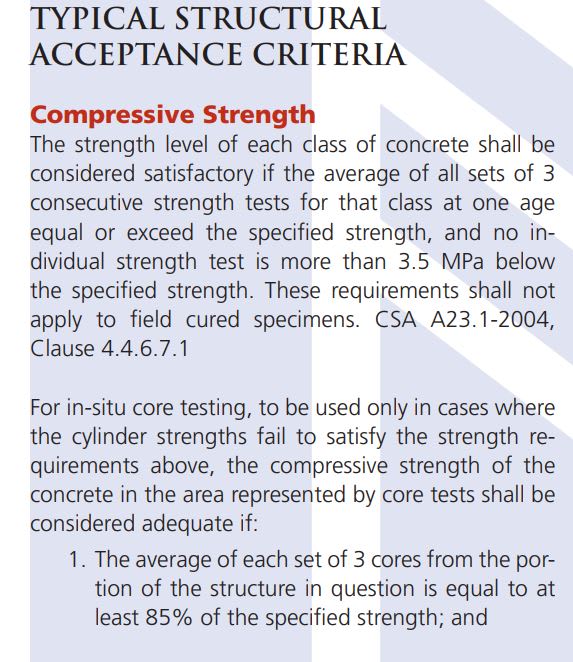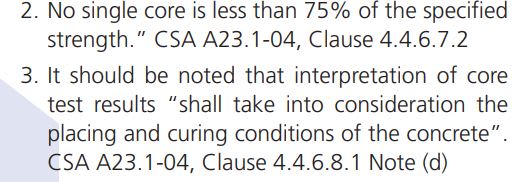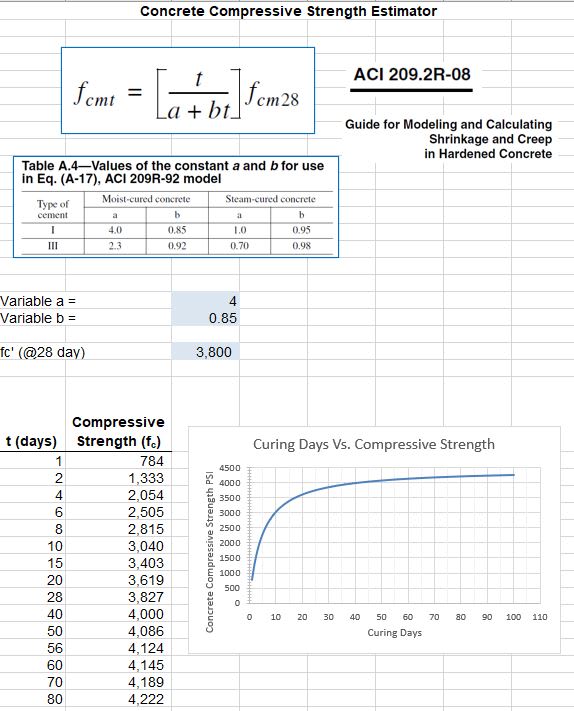With respect to ACI 318-14, our compressive strength tests for a retaining wall fall marginally below the minimum f’c requirements for durability given in Table 19.3.2.1 for Exposure Class F2, but our analysis indicates the lower concrete strengths are acceptable for the applied forces. The difference in value is 200 psi, however, the arithmetic mean of the tests does not equal or exceed f’c.
Does the concrete need to meet the strength requirements of 26.12.3.1 Compliance Requirements and 26.12.4 Investigation of low strength-test results for durability even though its adequate for the applied forces? Or are there relaxed requirements for durability alone?
If not, are there other solutions such as applying xypex?
Does the concrete need to meet the strength requirements of 26.12.3.1 Compliance Requirements and 26.12.4 Investigation of low strength-test results for durability even though its adequate for the applied forces? Or are there relaxed requirements for durability alone?
If not, are there other solutions such as applying xypex?



![[pipe] [pipe] [pipe]](/data/assets/smilies/pipe.gif)
